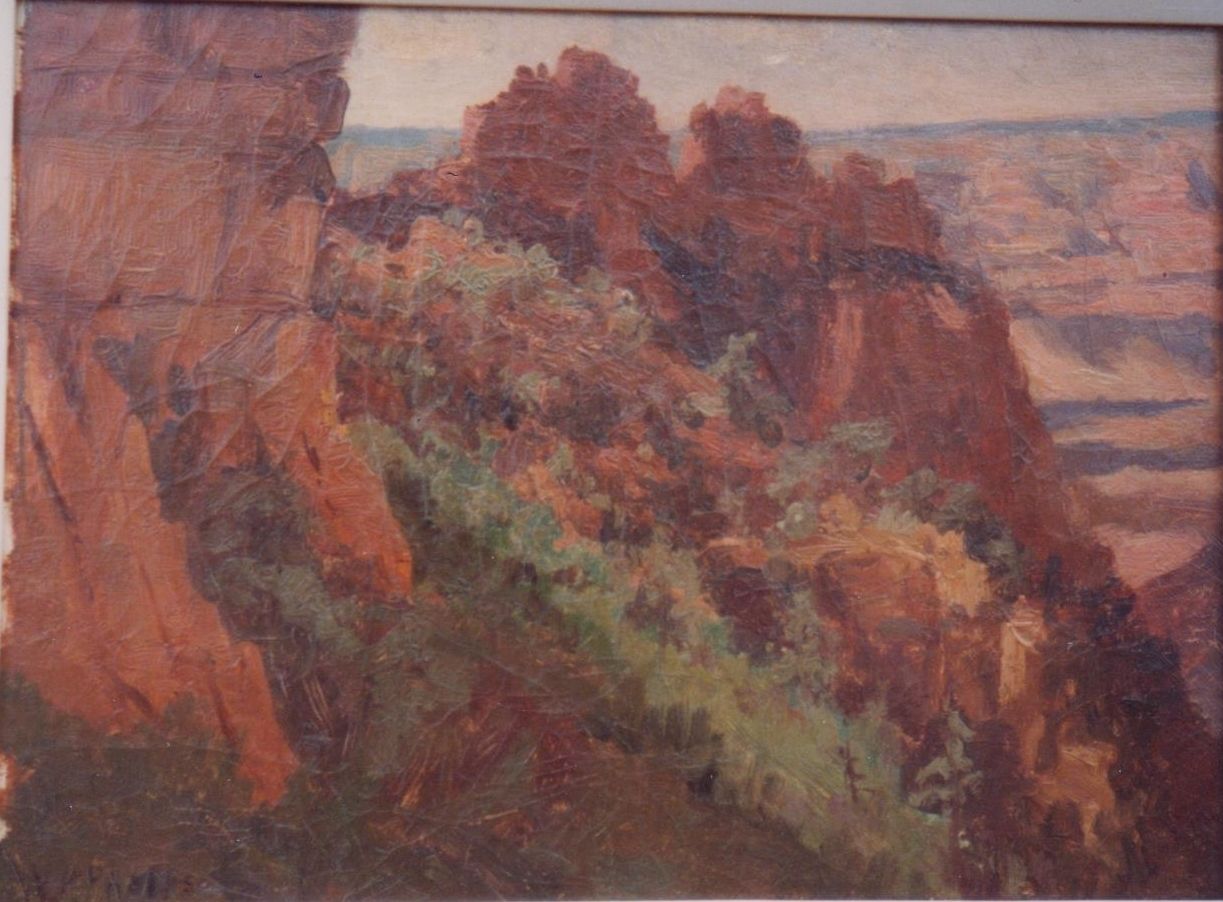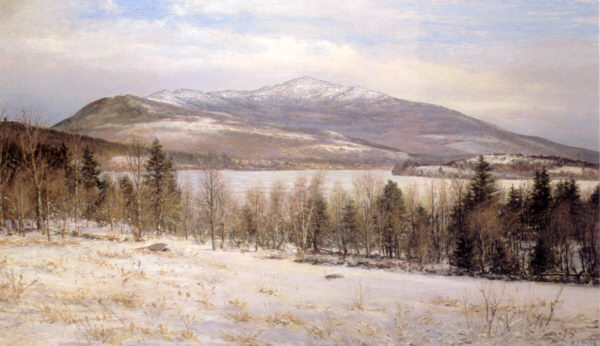
“Phelps, during a visit some 2-3 years before he reacquired his homestead, saw the mountain (Monadnock) through new eyes, and was to be excited and inspired by what he saw. Here were the things he had known from boyhood, which had grown into his soul, and which though they had laid dormant for years had awakened to vigorous life. From that moment he worked under the influence of a new inspiration. He studied the mountain with eyes of a lover. In sunshine and shadow, in storm and in calm he watched and noted and painted.”
Had a nice visit to the Currier Museum of Art in Manchester the other day, including a chance to see one of the original, iconic renderings of one of the most-painted mountains in the world. “Mount Monadnock from Stone Pond” was painted c. 1900 by William Preston Phelps, (1848-1923), New Hampshire native and the “painter of Monadnock.”
Suddenly coming face-to-face with Phelps’s work at the Currier was a pleasant surprise: White Mountain Art and Artists proclaims: “Mount Monadnock from Stone Pond is among the finest known examples of Phelp’s work. It survives in excellent condition and exemplifies the fine technique and refined aesthetic sensibility that are the hallmarks of his best works.”
And it seems appropriate to note during this especially hard winter that this exceptionally hardy (if troubled) Yankee preferred this season above all others to pursue his art, according to the fascinating biography by Edie Clark on the excellent Monadnock Art website:
Preston was especially fond of painting in winter, which was a cold and forbidding endeavor. To make himself comfortable, he built a traveling studio that could be transported on horse-drawn sled or wagon. The shelter was equipped with easel, paints, canvas, and a small oil stove. This enabled him to work outdoors for long periods of time. Though the summer seasons would have permitted him to work outdoors with less of an encumbrance, it’s interesting that so many of his canvases capture the mountain in the winter, in ice, in snow, the afternoon light casting pink shadows onto the blueish snow.
The whole story is worth a read, which includes the sorry tale of what Phelps considered to be his true masterpiece, which could not be farther removed from snowy New England landscapes: A massive (7′ x 12′) 1886 painting of the Grand Canyon, that he painted on location, as was his habit. The painting has been lost to fate, but remarkably, just a month ago a 9″ x 12″ Phelps Grand Canyon study turned up on eBay, claiming: “This particular one may well be the only surviving work of the Canyon by Phelps. A “plein aire” painter, he took huge canvases into the open, and built shelters around them to complete his landscapes on site.” And fetched a tidy $7500…


Be First to Comment